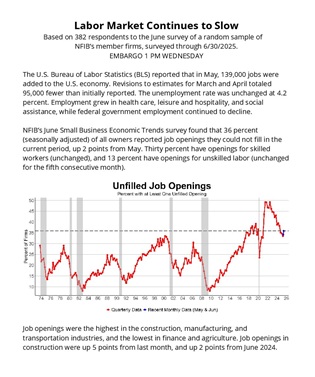SIX Reports Higher Operating Income – Markets Media

SIX H1 2025 Performance Report: Aligning Financial Growth with Sustainable Development Goals
Executive Summary
In the first half of 2025, SIX demonstrated significant strategic progress and financial growth, aligning its corporate objectives with key United Nations Sustainable Development Goals (SDGs). The period was highlighted by the completion of the Aquis acquisition, which expands SIX’s role in building resilient financial infrastructure (SDG 9) across Europe. Financial performance was strong, with a 4.7% increase in operating income. These developments, coupled with a revised ‘stable’ outlook from S&P Global Ratings, underscore SIX’s contribution to fostering sustainable economic growth (SDG 8) and supporting strong, transparent institutions (SDG 16).
Financial Performance Analysis (H1 2025 vs. H1 2024)
Financial results are presented at constant exchange rates unless otherwise specified. The performance reflects a business environment of lower interest rates and heightened market volatility, which influenced trading volumes positively.
- Operating Income: Increased by 4.7% to CHF 823.0 million.
- Net Operating Income: Rose by 4.8% to CHF 741.6 million.
- Operating Expenses: Remained stable at CHF 475.6 million, excluding transformation costs (TC) of CHF 31.0 million related to the Scale Up 2027 program.
- EBITDA: Excluding TC, increased by 14.8% to CHF 266.0 million, with the corresponding margin improving to 35.9% from 32.8%.
- EBIT: Stood at CHF 81.5 million, impacted by a non-cash value adjustment of CHF 69.3 million on the Worldline stake.
- Group Net Profit: Adjusted Group net profit was CHF 111.5 million; reported Group net profit was CHF 42.2 million.
Strategic Developments and Contribution to Sustainable Development Goals
SIX’s strategic initiatives in H1 2025 have advanced its market position while making tangible contributions to global sustainability targets.
- Enhancing Resilient Infrastructure (SDG 9): The acquisition of Aquis, finalized on July 1, 2025, establishes SIX as a premier pan-European exchange innovator. This integration creates a more efficient and resilient financial infrastructure, providing access to 16 European capital markets and directly supporting the development of reliable and sustainable infrastructure as outlined in SDG 9.
- Promoting Sustainable Economic Growth (SDG 8): The “Scale Up 2027” transformation program was launched to drive mid-single-digit income growth and improve the EBITDA margin to over 40%. By strengthening its operational efficiency and commercial offerings, SIX fosters a stable market environment conducive to decent work and sustained economic growth.
- Building Strong Institutions and Partnerships (SDG 16 & 17): The successful issuance of new corporate bonds and the subsequent revision of S&P’s rating outlook to ‘stable’ affirm SIX’s robust governance and financial stability. This reinforces its role in building effective and transparent institutions (SDG 16). The Aquis acquisition itself represents a significant cross-border partnership, advancing SDG 17 (Partnerships for the Goals).
Business Unit Performance and SDG Alignment
All business units reported growth, contributing to both financial performance and the broader mission of supporting sustainable market ecosystems.
- Exchanges: Elevated market volatility led to a 13.2% year-on-year increase in equity trading turnover. A notable surge of over 100% in ETF trading turnover at SIX Swiss Exchange demonstrates the provision of accessible and diverse investment tools, which are vital for dynamic economic systems (SDG 8).
- Securities Services: Growth in domestic and international custody, along with the integration of the SDX (SIX Digital Exchange) business, highlights a commitment to innovating financial infrastructure (SDG 9). These services are fundamental to the stability and integrity of financial markets, a key component of strong institutions (SDG 16).
- Financial Information: Organic growth was driven by market data, display products, and tax and regulatory services. By providing transparent and reliable data, this unit empowers market participants and supports regulatory compliance, thereby strengthening the institutional framework of financial markets (SDG 16).
- Banking Services: Strong growth in debit processing and digital payment services contributes to the modernization of financial infrastructure (SDG 9), ensuring broad access to secure and efficient transaction systems.
Analysis of Sustainable Development Goals (SDGs) in the Article
1. Which SDGs are addressed or connected to the issues highlighted in the article?
The article, which details the financial performance and strategic acquisitions of the financial market infrastructure provider SIX, does not explicitly mention any Sustainable Development Goals. However, based on the nature of the company’s business and its activities, the content is primarily connected to the following SDGs:
- SDG 8: Decent Work and Economic Growth
- SDG 9: Industry, Innovation, and Infrastructure
Explanation:
- SDG 8: Decent Work and Economic Growth is relevant because SIX, as a core component of the financial market, provides the infrastructure necessary for economic activity, investment, and growth. The article’s focus on “strong organic growth,” increased “operating income,” and higher “trading volumes” reflects economic activity that underpins this goal. The company’s own growth contributes to the economy, and its services facilitate broader economic development.
- SDG 9: Industry, Innovation, and Infrastructure is directly addressed as SIX’s core business is providing and developing financial market infrastructure. The article highlights the company’s efforts to innovate and expand this infrastructure through the “Aquis acquisition,” positioning itself as a “pan-European exchange innovator,” and launching the “Scale Up 2027” transformation program. These actions directly relate to building resilient infrastructure and fostering innovation within the financial industry.
2. What specific targets under those SDGs can be identified based on the article’s content?
Based on the activities described, the following specific targets can be identified:
SDG 8: Decent Work and Economic Growth
-
Target 8.2: Achieve higher levels of economic productivity through diversification, technological upgrading and innovation.
The article supports this target by describing SIX’s “transformation program Scale Up 2027 to keep pace with the evolving role of financial market infrastructures” and its goal to become a “leading pan-European exchange innovator.” This focus on transformation and innovation is central to increasing economic productivity within the financial sector. -
Target 8.10: Strengthen the capacity of domestic financial institutions to encourage and expand access to banking, insurance and financial services for all.
By expanding its operations to have “access to 16 capital markets across Europe,” SIX is strengthening the infrastructure that underpins financial services. This expansion enhances the capacity and efficiency of capital markets, which is a prerequisite for financial institutions to offer services.
SDG 9: Industry, Innovation, and Infrastructure
-
Target 9.1: Develop quality, reliable, sustainable and resilient infrastructure, including regional and transborder infrastructure, to support economic development and human well-being.
The entire article is about the development of financial infrastructure. The acquisition of Aquis to create a “leading pan-European exchange” is a clear example of developing transborder infrastructure. The revision of S&P’s rating outlook for SIX to “stable” indicates the market’s perception of the company’s reliability and resilience. -
Target 9.b: Support domestic technology development, research and innovation in developing countries, including by ensuring a conducive policy environment.
While the article focuses on Europe, the principle of supporting innovation is central. SIX’s launch of the “Scale Up 2027” program and its focus on “market data and connectivity solutions,” “real-time data,” and “digital services” demonstrate a commitment to technology development and innovation within its industry.
3. Are there any indicators mentioned or implied in the article that can be used to measure progress towards the identified targets?
The article is a financial report and is rich with quantitative data that can serve as implied indicators for the identified targets, even if they are not official SDG indicators.
Indicators for SDG 8 Targets
-
For Target 8.2 (Economic Productivity & Innovation):
- Financial Performance Growth: The increase in operating income by 4.7% and EBITDA by 14.8% serve as proxies for increased productivity and efficiency.
- Profitability Improvement: The rise in the EBITDA margin from 32.8% to 35.9% indicates more efficient operations.
- Market Share: Achieving an “aggregated 15% market share” in Europe is an indicator of successful competitive innovation.
-
For Target 8.10 (Capacity of Financial Institutions):
- Market Reach: Expansion to provide “access to 16 capital markets across Europe” is a direct measure of increased infrastructural capacity.
- Transaction Volumes: The growth in “combined equity trading turnover” by 13.2% and “ETF trading turnover” by over 100% indicates increased utilization of the financial infrastructure.
Indicators for SDG 9 Targets
-
For Target 9.1 (Resilient Infrastructure):
- Strategic Investments: The “completion of the Aquis acquisition” is a key indicator of investment in expanding infrastructure.
- Financial Stability: The revision of the “S&P Rating Outlook… to stable” is a qualitative indicator of the infrastructure’s perceived resilience and reliability.
-
For Target 9.b (Innovation):
- Dedicated Programs: The launch of the “transformation program Scale Up 2027” is an indicator of a formal commitment to innovation.
- Growth in Tech-driven Services: The article cites growth in “market data and connectivity solutions,” “real-time data,” and “digital services” as key drivers, indicating successful technological development.
4. Summary Table of SDGs, Targets, and Indicators
| SDGs | Targets | Indicators (Identified in the Article) |
|---|---|---|
| SDG 8: Decent Work and Economic Growth | 8.2: Achieve higher levels of economic productivity through innovation. |
|
| 8.10: Strengthen the capacity of financial institutions and expand access to financial services. |
|
|
| SDG 9: Industry, Innovation, and Infrastructure | 9.1: Develop quality, reliable, and resilient infrastructure. |
|
| 9.b: Support technology development and innovation. |
|
Source: marketsmedia.com

What is Your Reaction?
 Like
0
Like
0
 Dislike
0
Dislike
0
 Love
0
Love
0
 Funny
0
Funny
0
 Angry
0
Angry
0
 Sad
0
Sad
0
 Wow
0
Wow
0













































































